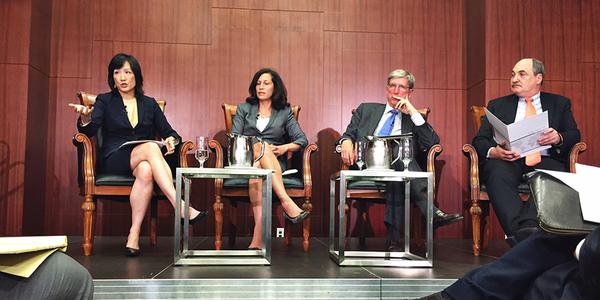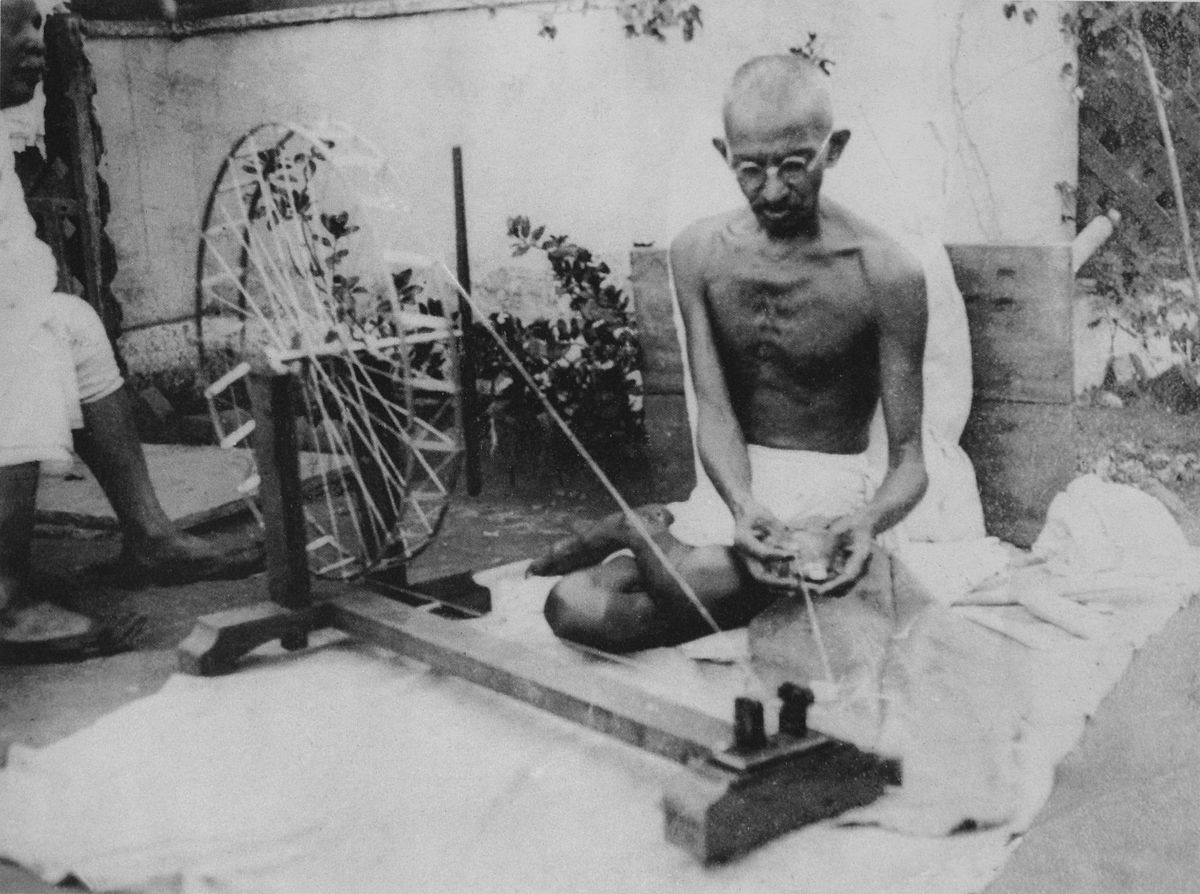11.19.16
Posted in America, Intellectual Monopoly, Patents at 2:50 pm by Dr. Roy Schestowitz
Michelle Lee (below on the left) wanted patent reform, but Donald Trump will quite likely crush it

Summary: Another signal that whatever progress was made at the USPTO (tightening patent scope among other improvements) could soon be crushed by a Republican administration
THE US patent, copyright, trademark etc. system is likely to change under the new President. He has some rather notorious experience trying to tilt the trade marks system to his own advantage, being a reckless billionaire who was born very rich and privileged. Protectionism (perpetuating might, power, and money) comes naturally for Trump.
An opportunity to advise the USPTO is reportedly being given, but megacorporations and their lobbyists (and/or lawyers) will surely dominate the proposals and ensure that virtually nothing changes for the better.
“Protectionism (perpetuating might, power, and money) comes naturally for Trump.”As expected, the new President will herald an era for billionaires (like Donald Trump) and their copyright/trademark/patent monopolies. IAM thinks that patent reform will be put on hold. Here is why: “In her keynote speech USPTO Director Michelle Lee predicted that once patent reform did come back on the agenda it would be more targeted than previous, more comprehensive proposals.”
According to this article from IP Watch: “Now in her final weeks in office, United States Patent and Trademark Office Director Michelle Lee today looked back over the Obama administration’s work on patents and made predictions for the next administration due to take over in January. She hailed the outgoing administration’s successes and said to expect a continued focus on a strong IP system, legislative changes on hot button issues but not right away, and continued engagement around the world.”
Here is what Wall Street’s media said: “President-elect Donald Trump’s pick to head the Patent and Trademark Office will likely be very different from Director Michelle K. Lee, who was Google’s top patent attorney before heading the PTO.”
“Under Kappos’ leadership the USPTO granted terrible patents and led to a mess that only in recent years (post Alice, Mayo and AIA) started to improve a bit.”Whoever is picked next, it hopefully won’t be yet another corporate lobbyist turncoat like David Kappos. Under Kappos’ leadership the USPTO granted terrible patents and led to a mess that only the recent years (post Alice, Mayo and AIA) started to improve a bit.
Found via Patently-O prior to all the above was this publication from the USPTO itself (directy).
MIP is meanwhile chatting with the commissioner for trademarks at USPTO. It doesn’t seem like she too will be removed from her position. █
Permalink
 Send this to a friend
Send this to a friend
10.26.16
Posted in Asia, Intellectual Monopoly, Patents at 6:52 pm by Dr. Roy Schestowitz
Shades of the Regional Comprehensive Economic Partnership (RCEP), which can bring software patents to India

Non-cooperation movement is needed here
Summary: The envoy of the US is trying to tell India how to run the country (stricter laws regarding copyrights, trademarks, and patents), as a condition for foreign investment by multinational corporations
PUTTING aside the EPO for a moment (we plan to cover Željko Topić later this week and USPTO over the weekend), earlier today we found some articles from Indian news sites. The US is, quite frankly as expected (see Cablegate to understand how it works), trying to bully India into the entrapment which is patent maximalism, maybe even software patents which are currently not legal in the country (and less so in the US as well, taking Alice into account).
“The US is, quite frankly as expected (see Cablegate to understand how it works), trying to bully India into the entrapment which is patent maximalism, maybe even software patents which are currently not legal in the country (and less so in the US as well, taking Alice into account).”Based on reports like this one [1, 2] (cross-posted), the US makes improving relationships with India contingent upon bending over to US corporations, changing patent laws for them. To quote one key paragraph: “He said that on the persuasion of the US government the present government of India has taken some initiatives to amend and make stronger IPR laws.” Other news reports [1, 2] look at another angle and the “USPTO continues to move forward with its Enhanced Patent Quality Initiative (EPQI),” says Patently-O today, “and is hosting a set of five Quality Forum events over the next month in DC, Milwaukee, KC, Baton Rouge, and Portland.”
So while the US itself acknowledges the problem with too broad a patent scope (see the recent report from GAO [1, 2]), it seems perfectly fine screwing around with patent scope in other continents, including Europe. Guess whose economies would be harmed and for whose benefit. █
Permalink
 Send this to a friend
Send this to a friend
10.25.16
Posted in Deception, Europe, Intellectual Monopoly, Patents at 5:17 pm by Dr. Roy Schestowitz
Entering a rather advanced propaganda mode

Summary: The grim vision of the EPO which is losing all its talent (over time), becomes more like a production line (quality does not matter), and produces propaganda for "media positioning" (or “placements”) — all under the guise of ‘studies’
“Who will be stupid enough to apply to be hired under these conditions?”
This was the question asked earlier today in relation to the EPO under Battistelli’s regime. The full comment says:
1: so they can fire you at will and prohibit you to work afterwards or they keep your pensions? Who will be stupid enough to apply to be hired under these conditions?
2: the EPO will decrease costs but not lower the fees? What will they do with the excess money?
Given the decline in patent quality under Battistelli, we expect fees to have to decline and the same goes for salaries. The EPO is becoming another USPTO and some people believe that eventually it will be another INPI (i.e. no patent examination at all, or only a truly superficial check before filing). Regarding the notion of “excess money”, some figures from the secretive Office actually suggest financial losses/deficit. There’s no likely rebound now or ever, until or unless pensions (long-term liabilities) get gradually cut, well-paid staff replaced by new and relatively unskilled/underpaid/overworked workers (there is lack of interest in EPO jobs either way), and patent applications flow in like water and granted in bulk while they last (to the point of exhaustion, whereupon examiners become redundant). Watch this new EPO job ad (from today). Pay attention to the skills required (just two languages and a Masters degree). The EPO is experiencing brain drain. Managers know it. They’re desperate for job applications now, but they’re failing to attract enough of them, or so we’re told by insiders. Standards have truly declined.
“Staff of the EPO isn’t even being told what’s going on; examiners are constantly being lied to by the management.”How can they possibly attract more interest from the public amid unprecedented scandals? How about puff pieces resulting from a so-called ‘study’ (stooping so low as to generate bogus, self-commissioned ‘studies’ is the latest trend), such as the one we mentioned last night?
The EPO-IPO (EPO+EUIPO) already finds some clueless (or docile, or without any critical skills) stenographers to parrot claims from this ‘study’ of theirs (which they paid for). To quote: “The study, published on 25 October, says this number equates to almost €5.7 trillion annually. It covers a broad range of IP rights, including patents, trademarks, designs, copyright, geographical indications and plant variety rights.”
Wow! “€5.7 trillion annually.” Big numbers there, but what does that allude to? Just a big number to occupy some headlines and add some prestige to institutions with a turnover/profit 5 orders of magnitude lower (i.e. about 100,000th of the above figure). Here is the laughably shallow part (among others):
António Campinos, executive director of the EUIPO, said: “The rapidly changing nature of business in the 21st century means that the EU and global economy relies strongly on intellectual property rights such as trademarks, designs, patents and other rights.”
Will you take over all the above, António? As some believe you would? There’s no telling, only speculations. Staff of the EPO isn’t even being told what’s going on; examiners are constantly being lied to by the management.
“Maybe the EPO will just fire a lot of examiners and hire some more “paper pushers” to cope with the increased throughput (or inflow) of crappy applications and crappy grants.”In other (more minor) news, the EPO is said to have changed requirements. “In the past,” says the article, “it was common for a patent holder to execute an assignment in favor of an assignee, without the assignee signing the document. Under the new Guidelines, the EPO will no longer accept an assignment document that uses the single-signature format.”
Maybe the EPO will just fire a lot of examiners and hire some more “paper pushers” to cope with the increased throughput (or inflow) of crappy applications and crappy grants. After all, it’s not as though detailed, thorough, comprehensive and even exhaustive search (potentially with several appeals to the boards) are what Battistelli wants. He just wants a Chinese production line, akin to what he sees in SIPO (for which he has profound affinity). Work conditions, correspondingly, degrade greatly. █
Permalink
 Send this to a friend
Send this to a friend
10.24.16
Posted in Europe, Intellectual Monopoly, Patents at 6:05 am by Dr. Roy Schestowitz

Summary: EPO and EUIPO in collaboration for the promotion of the notion that they are both necessary (and reinforced speculations about growing overlap between them)
RUMOURS have been swirling for quite some time — both within and outside the EPO — that growing overlap between the EUIPO and the EPO is likely if not inevitable. This does not necessarily imply unification; at the very least it means collaboration. There are already some HR overlaps, as we pointed out earlier this year [1, 2].
EPO collaborations are not out of the ordinary. When the EPO does not privately boast collaborations with Stasi-connected spying agencies (Desa/Control Risks) and PR firms it publicly brags about collaboration with other patent offices. Watch this new article from the Korea Herald:
Korea, EU see surge in intellectual property rights exchange
[...]
In 2015, the EPO proceeded 6,400 applications from Korea, making the country the fifth-largest source of European patent applications, according to Pihlajamaa.
In EPO’s company rankings, Samsung and LG have been among the four largest company applicants for six years.
These are incorrect English terms, starting in the headline and continuing inside the article. Not “exchange” is at stake here but expansion. And it mostly benefits large/multinational corporations, like those which the EPO gives preferential treatment to. Imagine if the public at large knew this. The EPO has been trying to change the story since; it was an act of revisionism and damage control. Now they say that this preferential treatment is available to everyone, everywhere, which practically defeats the purpose of it. In a sense, this programme was undermined once exposed publicly.
Going back to the EUIPO, the EPO said: “What is the contribution of IPR-intensive sectors to the European economy? Stay tuned & you’ll find out on Tuesday.”
“The EPO has been trying to change the story since; it was an act of revisionism and damage control.”The tweet says Tuesday after it said Monday (tweet deleted for the mistake in it). So that’s tomorrow, not today. Expect lots of hogwash and protectionism advocacy. Why is this significant? See this other tweet which demonstrates overlaps between the EPO and EUIPO: “#EUIPO and @EPOorg will shortly launch a new study on the contribution of #IPR-intensive industries to the #EU economy. Stay tuned!”
The EPO retweeted this, adding to growing evidence of the overlap.
The EPO also wrote: “What are the economic benefits for Europe of patents, trademarks, designs and other forms of IP? Find out on Tuesday #IPvalue #IPRindustries”
As the EPO under Battistelli threw away the notion patent quality (for “production”, i.e. quantity), all of this is doomed. It’s just beneficial to trolls (wait and watch!) and to large corporations that patent in bulk. Given the reputation of EPO ‘studies’ as of late, we don’t expect the above to be anything but propaganda — something to be used to ‘plant’ puff pieces in the media later this week.
“It’s possible that something pretty big is happening (other than the relentless UPC efforts) and only few people at the top are “in the know”…”“Just #3daysleft until we publish a further EU-wide study of the impact of IP rights on the European economy,” EPO PR people wrote, adding hashtags like #IPvalue #IPRindustries (which themselves smack of propaganda, not true studies).
Imagine what would happen if the EPO was shut down and folded into the EUIPO (the USPTO already deals with patents and trademarks in tandem). Would patent applications be dealt with by a process of registration only (like in France)? The US, based on this new post from Patently-O, moves in a similar direction (“Maria Pallante Out as Chief of Copyright Office: New Calls for Unified US Intellectual Property Office”).
Never say never. It’s possible that something pretty big is happening (other than the relentless UPC efforts) and only few people at the top are “in the know”… █
Permalink
 Send this to a friend
Send this to a friend
10.09.16
Posted in Europe, Intellectual Monopoly at 7:41 am by Dr. Roy Schestowitz
 Summary: A closer look at the “FJORDBLINK” trademark and what happened to the entity which registered it in Denmark (where the Chairman of the Administrative Council of the European Patent Organisation is still in charge)
Summary: A closer look at the “FJORDBLINK” trademark and what happened to the entity which registered it in Denmark (where the Chairman of the Administrative Council of the European Patent Organisation is still in charge)
IN OUR fourth part of the series we wrote about a company connected to the Chairman of the Administrative Council of the European Patent Organisation (EPO), but there’s a side story that merits a mention at least in the addenda.
We managed to find a copy of a product brochure for the birth pool marketed by FJORDBLINK MEDICAL ApS [PDF]. The product brochure is dated May 2015.
“According to official CVR records this company ceased trading on 10 October 2013. It is unclear what has exactly has happened to the “FJORDBLINK” trademark registered by FJORDBLINK MEDICAL P/S or who, if anybody, is the current assignee.”There is a small mystery here that we have been unable to solve so far. The brochure refers to the name “FJORDBLINK” as a registered trademark. According to our research, the trademark is indeed registered both in Denmark and also as a European trademark [PDF] with the EUIPO in Alicante [PDF]. In Denmark it is registered under the number VR 2011 02145.
As a European trademark it is registered under the EU Trademark number 011266764. However, as we noted in a previous article the trademark was not registered by FJORDBLINK MEDICAL ApS (CVR number 25942507) but by another entity with a confusingly similar name: FJORDBLINK MEDICAL P/S (CVR number 33392737).
The CVR number 33392737 leads to a defunct limited partnership company by the name of FOME P/S with an address at Vibelandsvej 8, Valby, 3200 Helsinge. Between 31 December 2010 and 11 April 2013 the company operated under the name FJORDBLINK MEDICAL P/S and its registered address was in Randers where Helle Jahn Jørgensen resides.
According to official CVR records this company ceased trading on 10 October 2013. It is unclear what has exactly has happened to the “FJORDBLINK” trademark registered by FJORDBLINK MEDICAL P/S or who, if anybody, is the current assignee.
If anyone wishes to help us find out, please get in contact. █
Permalink
 Send this to a friend
Send this to a friend
09.14.16
Posted in Asia, Intellectual Monopoly, Patents at 4:43 pm by Dr. Roy Schestowitz
“Anyone who says they’re good for you is a liar, or badly informed. And hiding patents behind copyright & trademarks in “intellectual property” is like sugar hiding behind fat and salt. Patents are the sugar of technology.” –Pieter Hintjens, yesterday [1, 2]

The patent maximalists view patents like the war industry views bombs
Summary: The latest fine example of the mentality or the mindset of people who are making money from peddling patents even when these are not needed, let alone desirable
EARLIER THIS month we wrote about the rise of patent trolls in east Asia. There are several new examples of that and regarding a case which we covered here before Dr. Glyn Moody has published “Chinese State Patent Troll Absorbed By Smartphone Maker Xiaomi, Adding To Its Patent Hoard”, citing the same report that we did (from IAM). “The absorption of Ruichuan IPR Funds by Xiaomi,” he explained, “which must have taken place with the Chinese government’s approval — is clearly part of the same strategy of bulking up in the patent department as it prepares to expand abroad. The big question is whether Xiaomi is planning to use its new portfolio purely defensively, so that it can sign cross-licensing deals, or whether it will start going on the offense and sue Western companies in their home markets too.”
As Moody noted a few months ago, China is now using Texas courts to sue large US companies, more or less like trolls, proving that the trigger-happy system in the US can actually work against the US and undermine its dominance in the area of technology.
“IAM views the deal as just a bunch of patents, but it’s the kind of misguided view which assumes patents are physical assets.”IAM has published quite a few articles recently about Japan alone [1, 2, 3, 4] and in them we see IAM’s loaded statements and headlines, insinuating that because patents are being used for corporate wars in Japan it means that patents are desirable. That’s the same logic as “there are many wars, thus we need nuclear weapons” (irrespective of their effect or death toll, not just mutually-assured destruction). Another newer article mentioned the acquisition by HP of Samsung’s printer business (or a bundle of Samsung patents if one thinks the IAM way) and added that “Samsung Electronics announced yesterday that it had reached an agreement to sell its printer business to HP for $1.05 billion. The deal, which will see Samsung shed a significant number of IP assets, marks the beginning of a new chapter for the Korean company as it seeks to slim down and refocus on core business areas.”
Samsung has a large number of patents (the largest by some criteria, as measured in particular patent offices), but the company rarely if even uses them to sue. It’s not quite in the Korean tradition (the same goes for LG). IAM views the deal as just a bunch of patents, but it’s the kind of misguided view which assumes patents are physical assets. The use of the term “IP”, moreover, is misleading. █
Permalink
 Send this to a friend
Send this to a friend
05.01.16
Posted in Intellectual Monopoly, Patents at 3:47 am by Dr. Roy Schestowitz
English/Original
Article as ODF
Publicado en Intellectual Monopoly, Patentes at 4:19 am por el Dr. Roy Schestowitz
 Sumario: el Professor Mark Lemley de Lex Machina resalta las tendencias en litigation al colectar y analizar datos relacionados con patente y concerniéntes a monopolios intelectuales en general; actualmente muestra una sequía de litigaciones (muestran que ha disminuído)
Sumario: el Professor Mark Lemley de Lex Machina resalta las tendencias en litigation al colectar y analizar datos relacionados con patente y concerniéntes a monopolios intelectuales en general; actualmente muestra una sequía de litigaciones (muestran que ha disminuído)
El reportáje Hatch-Waxman/ANDA [Abbreviated New Drug Application] de Lex Machina revela un repunte en llendao de casos,” MIP escribió el otro dia, “también como los grandes participantes y firmas de leyes en litigación de patentes ANDA” (con baja calidad de patentes, por seguro habrá mas juicios).
Encontramos interesante que MIP optó por centrarse únicamente en ANDA (un solo aspecto entre muchos) debido a que las cifras de Lex Machina no muestran un aumento en los litigios en general. ¿Sesgo de selección? Cherry-picking tal vez, como medios/método de cualquier abogado para la construcción engañosa (pero no obstante afirmaciones no falsas)? Como un sitio maximalista de patentes acaba de decirlo, “informe de litigios de propiedad intelectual muestra tendencias a la baja en la patentes” y citar al autor (que no es partidario entusiasta de las patentes de software): “La propiedad intelectual de análisis de litigio firma Lex Machina ha publicado recientemente un informe que identifica las tendencias en litigios de propiedad intelectual durante el transcurso del primer trimestre de 2016. el primer trimestre produjeron algunos acontecimientos interesantes en lo que respecta a la disminución de ciertos tipos de litigios en todo el mundo IP. De hecho, se podría argumentar que el número de casos de propiedad intelectual presentada fueron tendencia a la baja en todos los ámbitos durante el primer trimestre de 2016.
“Incluso si la Oficina de Patentes continúa ignorando la realdida post Alice, las courtes ciertamente no lo hacen.”
“Informes regulares de litigios de patentes publicados por Lex Machina en los últimos meses nos han dado una idea de los patrones de los últimos años. Un post de principios de enero sobre las tendencias de litigio durante 2015 refleja los fuertes incrementos en los litigios sobre patentes y el dominio de ciertos cortes de distrito de Estados Unidos en recibir esos casos. Un informe de 2015 de litigios de patentes más grande publicado por Lex machina Marzo Abril US mostró los mejores litigantes y afirmó patentes en el curso de ese año.”
Como vamos a mostrar en consiguientes posts, las patentes de software siguen muriendo en los EE.UU., sin importar lo que los grupos de presión/cabilderos están tratando de lograr. Incluso si la Oficina de Patentes continúa ignorando la realdida post Alice, las courtes ciertamente no lo hacen. La oficina de patentes es, en general, recibiendo incentivos para conceder cada vez más patentes, mientras que los tribunales producen juicios basados en la ley.
Permalink
 Send this to a friend
Send this to a friend
04.30.16
Posted in Intellectual Monopoly, Patents at 4:19 am by Dr. Roy Schestowitz
 Summary: Professor Mark Lemley’s Lex Machina highlights litigation trends by collecting and analysing data related to patents and pertaining to intellectual monopolies in general; now it shows litigation droughts
Summary: Professor Mark Lemley’s Lex Machina highlights litigation trends by collecting and analysing data related to patents and pertaining to intellectual monopolies in general; now it shows litigation droughts
“Lex Machina’s Hatch-Waxman/ANDA [Abbreviated New Drug Application] Report reveals a spike in case filing,” MIP wrote the other day, “as well as the biggest participants and law firms in ANDA patent litigation” (with low quality of patents, more lawsuits are assured).
We find it interesting that MIP chose to focus only on ANDA (one single aspect among many) because the figures from Lex Machina don’t show a spike in litigation overall. Selection bias? Cherry-picking perhaps, as any lawyer's means/method for constructing misleading (but nonetheless not false) statements? As a patent maximalism site has just put it, “IP litigation report shows downward trends in patent” and to quote the author (not the overzealous supporter of software patents): “Intellectual property litigation analytics firm Lex Machina has recently released a report identifying trends in IP litigation which have played out over the course of the first quarter of 2016. The first quarter saw some interesting developments in regards to decreases in certain types of litigation throughout the IP world. In fact, it could be argued that the number of IP cases filed were trending downward across the board during 2016’s first quarter.
“Even if the patent office continues to ignore the reality post Alice, courts certainly do not.”“Regular patent litigation reports released by Lex Machina in recent months have given us some insight into patterns forming over the past few years. An early January post on litigation trends during 2015 reflected steep increases in patent litigation and the dominance of certain U.S. district courts in receiving those cases. A larger 2015 patent litigation report published by Lex Machina in March showed us the top litigants and asserted patents during the course of that year.”
As we are going to show in later posts, software patents continue to die in the US, no matter what the lobbyists are trying to achieve. Even if the patent office continues to ignore the reality post Alice, courts certainly do not. The patent office is in general incentivised to grant more and more patents, whereas courts produce judgments based on law. █
Permalink
 Send this to a friend
Send this to a friend
« Previous entries Next Page » Next Page »





 Summary: A closer look at the “FJORDBLINK” trademark and what happened to the entity which registered it in Denmark (where the Chairman of the Administrative Council of the European Patent Organisation is still in charge)
Summary: A closer look at the “FJORDBLINK” trademark and what happened to the entity which registered it in Denmark (where the Chairman of the Administrative Council of the European Patent Organisation is still in charge)
 Sumario: el Professor Mark Lemley de
Sumario: el Professor Mark Lemley de 















 Content is available under CC-BY-SA
Content is available under CC-BY-SA